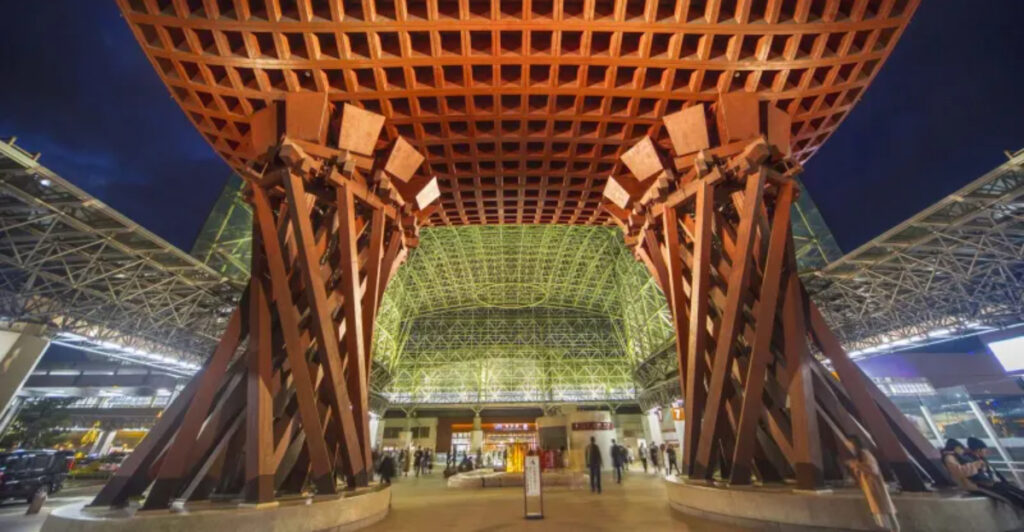Train stations are more than just places to catch a ride. Around the world, many have been designed as stunning architectural wonders that showcase the best of human creativity and engineering skill. From historic buildings with intricate details to modern marvels of glass and steel, these transportation hubs tell stories about their cities and times.
1. Grand Central Terminal – New York City, USA
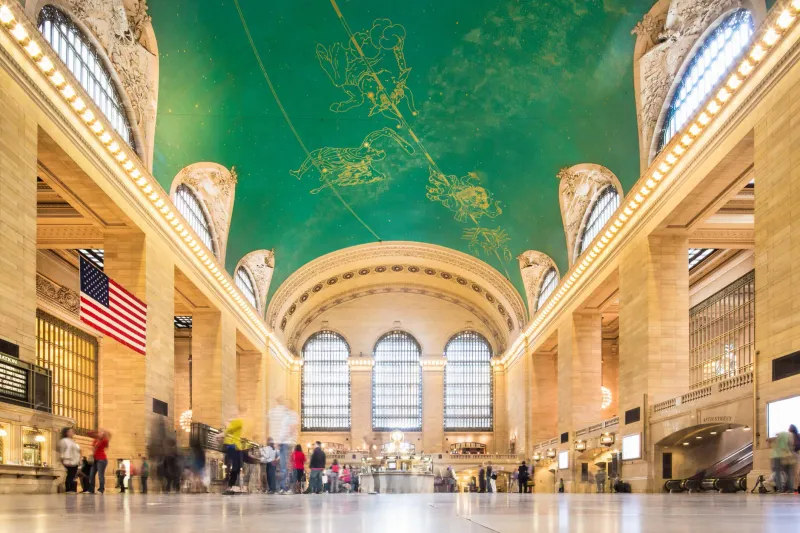
Stepping into Grand Central Terminal feels like entering a palace built for everyday travelers. The celestial ceiling mural, painted with gold constellations against a turquoise sky, hovers above the bustling main concourse where light streams through massive arched windows.
Completed in 1913 in the elegant Beaux-Arts style, this landmark features 44 platforms—more than any other station worldwide. Whispers exchanged at opposite corners of the whispering gallery demonstrate the building’s acoustic magic.
Look for the tiny dark patch on the ceiling—it was intentionally left uncleaned during renovations to show the difference between the original soot-covered ceiling and its restored glory.
2. St. Pancras International – London, UK
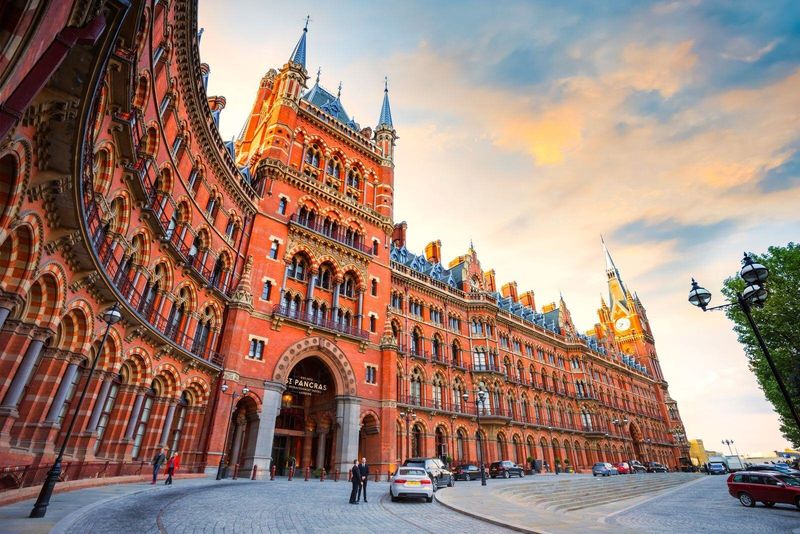
Victorian grandeur meets modern engineering at London’s St. Pancras International. The brick Gothic revival façade, once the Midland Grand Hotel, stands as a dramatic counterpoint to the soaring iron-and-glass train shed that curves overhead like a whale’s ribcage.
Reopened in 2007 after a massive restoration, this 1873 masterpiece narrowly escaped demolition in the 1960s. Today, the station hosts Eurostar trains to Paris and Brussels beneath Europe’s largest single-span station roof.
Musicians regularly play the public pianos scattered throughout the concourse, filling the space with impromptu concerts as travelers rush past or pause to listen.
3. Antwerp Central Station – Belgium
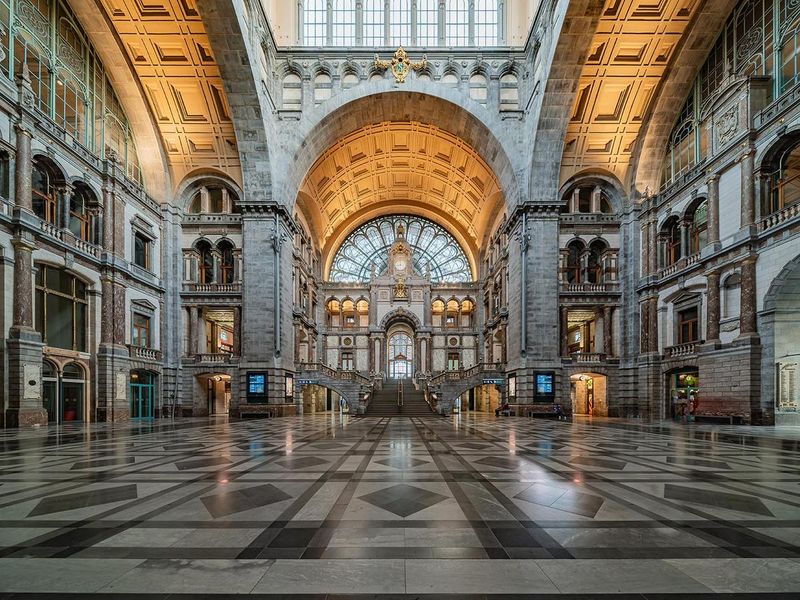
Known affectionately as the “Railway Cathedral,” Antwerp Central defies typical station design with its stone dome, marble staircases, and more than 20 different kinds of stone and marble. Completed in 1905, the eclectic structure combines neo-Baroque extravagance with industrial innovation.
The most remarkable feature might be hidden from casual view—the station operates on multiple levels, with platforms stacked vertically rather than side by side. Iron and glass vaults soar 43 meters high, flooding the space with natural light.
Diamond merchants once conducted business on these platforms, trading gems worth millions while waiting for trains.
4. Helsinki Central Station – Finland
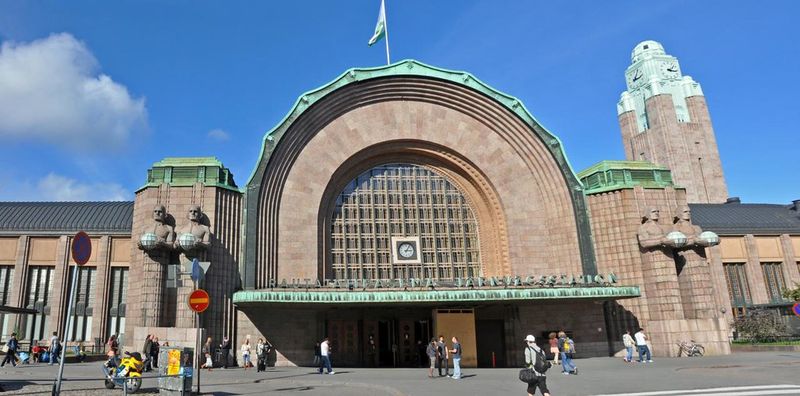
Four giant stone men, each holding a spherical lamp, guard the entrance to Helsinki’s main railway hub. These iconic sentinels have greeted travelers since 1919, when architect Eliel Saarinen’s Finnish National Romantic masterpiece was completed.
The station’s clean lines and granite facade hint at the modernist movement that would follow, while still embracing distinctly Finnish decorative elements. Inside, the high-ceilinged main hall feels surprisingly intimate despite handling over 200,000 passengers daily.
During the Cold War, this station served as a neutral meeting point between East and West, hosting diplomatic exchanges that couldn’t happen elsewhere.
5. Chhatrapati Shivaji Terminus – Mumbai, India
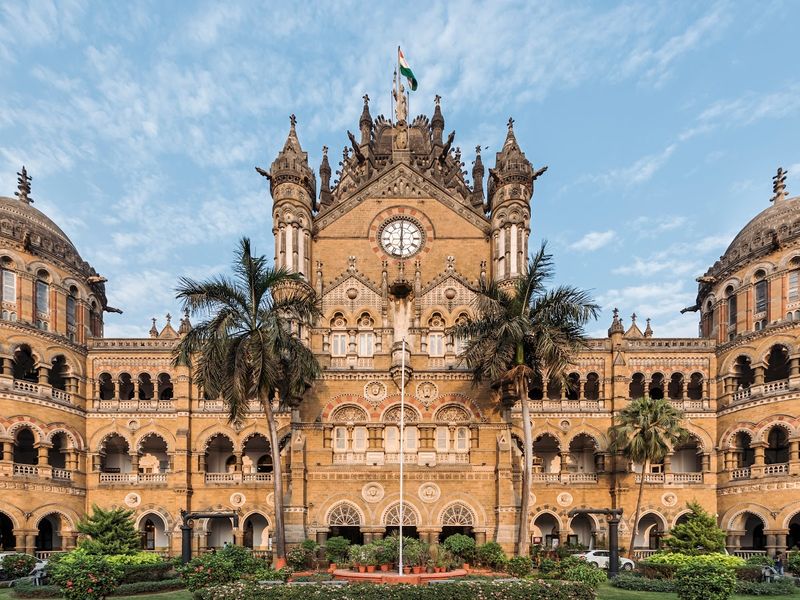
Victorian Gothic meets traditional Indian architecture in this UNESCO World Heritage site. Built in 1887 during British colonial rule, the station’s facade features peacock-filled windows, intricate wood carvings, and pointed arches topped with locally-inspired decorative elements.
The massive central dome crowns a structure that blends European layout with Indian aesthetics. Stone gargoyles share space with sculptures of local animals and plants, creating a unique architectural fusion.
Despite its museum-worthy appearance, this working station handles over three million commuters daily—making it one of the busiest railway hubs in India and a testament to functional beauty.
6. Tokyo Station – Japan
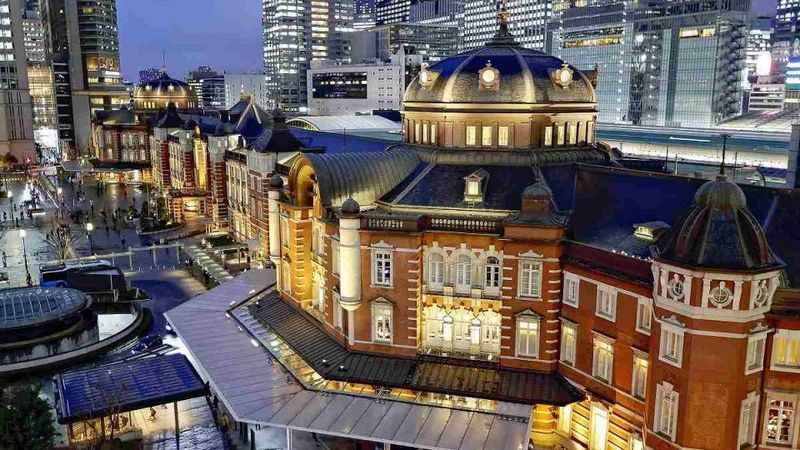
Rising like a phoenix after being partially destroyed in World War II, Tokyo Station’s red-brick Marunouchi building stands as a symbol of Japanese resilience. The 1914 Renaissance-inspired design by architect Tatsuno Kingo was meticulously restored in 2012, returning the iconic domes and detailed facade to their original glory.
Behind this historical face lies an ultra-modern transportation hub connecting multiple subway and bullet train lines. The contrast between old and new creates a uniquely Japanese harmony.
The station sits opposite the Imperial Palace, its dignified appearance deliberately designed to complement the royal residence and impress foreign visitors arriving in the capital.
7. Union Station – Washington D.C., USA
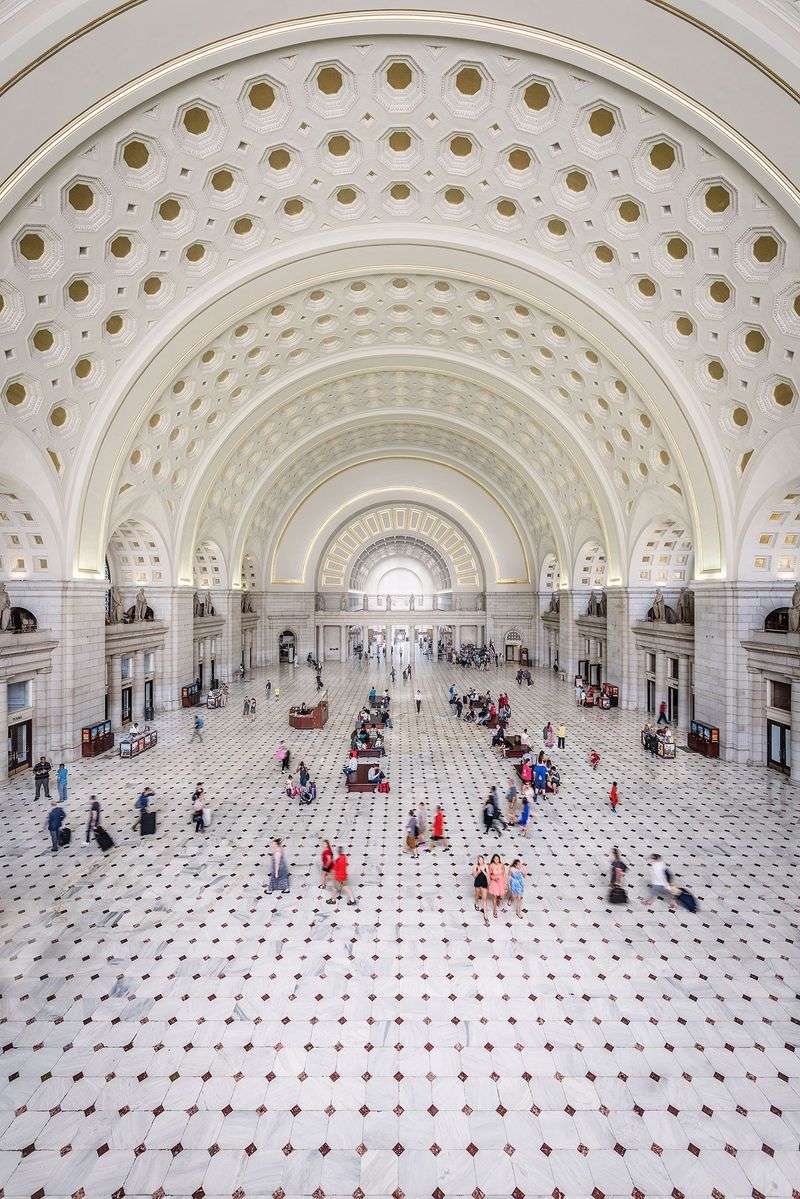
Marble gleams everywhere you look in Washington’s monumental gateway. Completed in 1907 as part of the City Beautiful movement, Union Station’s Beaux-Arts design by Daniel Burnham aimed to give the national capital a grand entrance worthy of a world power.
The main hall’s barrel-vaulted ceiling soars 96 feet above the marble floor, creating a space reminiscent of ancient Roman baths. Gold leaf details and massive Ionic columns frame the space where presidents have arrived and departed for over a century.
During World War II, the station handled as many as 200,000 travelers daily—many of them soldiers shipping out to or returning from the front lines.
8. Milano Centrale – Italy
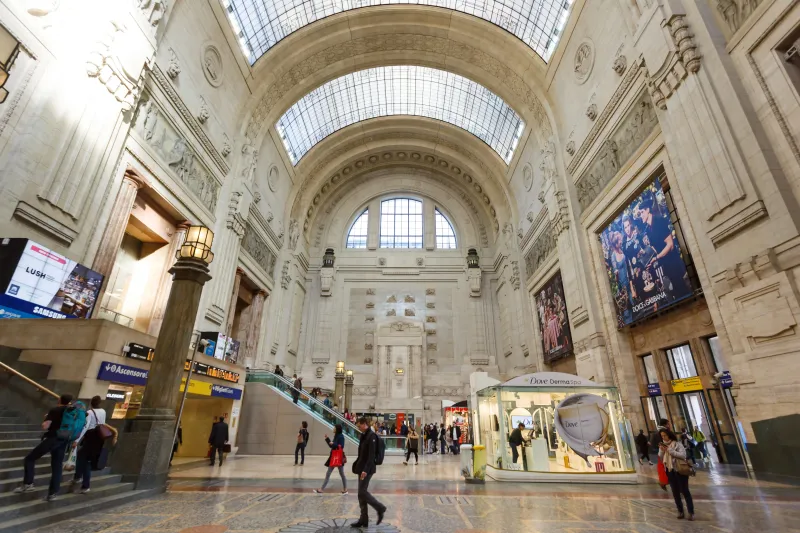
Mussolini’s vision of Italian power takes architectural form in Milan’s main station. Opened in 1931 after 20 years of construction, this massive structure combines Liberty, Art Deco, and fascist design elements into a grandiose statement of national ambition.
Twenty-four different types of marble create a dazzling interior palette. The vast central hall rises 72 feet, crowned by enormous steel and glass vaults that flood the space with light.
Originally designed before World War I, the station’s plans grew increasingly elaborate during construction, resulting in a structure far larger and more ornate than initially intended—a stone testament to changing political winds.
9. Liège-Guillemins Station – Belgium
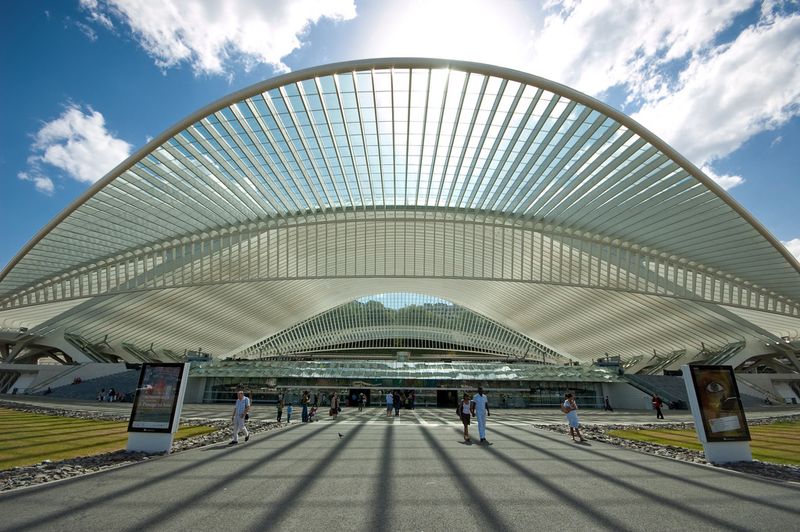
Santiago Calatrava’s masterpiece of curves and light transformed this Belgian city’s transit hub in 2009. Unlike traditional stations that separate inside from outside, Liège-Guillemins dissolves boundaries with a flowing canopy of glass and white concrete that seems to hover above the tracks.
No facade exists in the conventional sense—instead, the 145-meter-long vault creates a transparent gateway between city and railway. The ribbed structure evokes both whale skeletons and Gothic cathedrals.
The station changes dramatically with the weather and time of day as sunlight plays across its undulating forms, creating an ever-shifting experience for travelers passing through this modern transport cathedral.
10. Gare du Nord – Paris, France
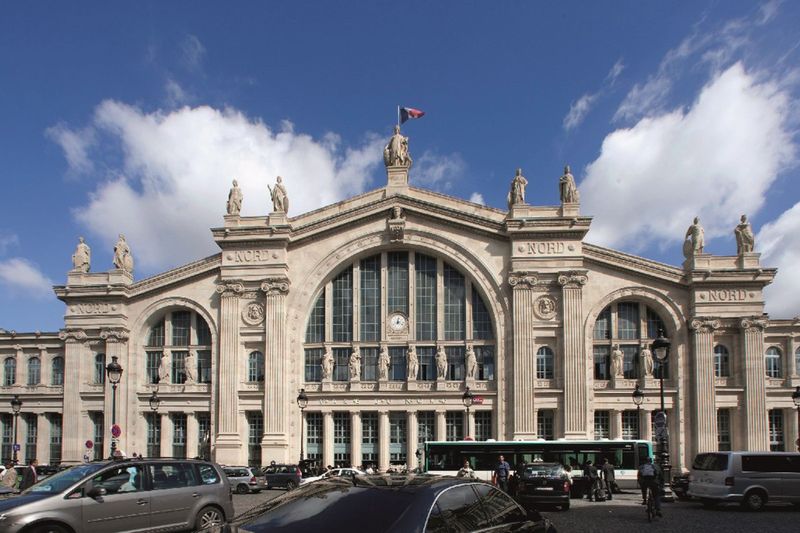
Europe’s busiest station wears its 19th-century industrial elegance with Parisian flair. Completed in 1864, the station’s neoclassical stone facade features 23 statues representing destinations served by the railway—the largest cities received the tallest sculptures.
Inside, iron columns support soaring glass roofs that flood the platforms with natural light. The original structure has been repeatedly expanded to handle increasing passenger numbers, now serving over 700,000 travelers daily.
Literary fans might recognize these halls from the pages of mystery novels—Agatha Christie’s Hercule Poirot and George Simenon’s Inspector Maigret both conducted fictional investigations amid the station’s bustling crowds.
11. Estació de França – Barcelona, Spain
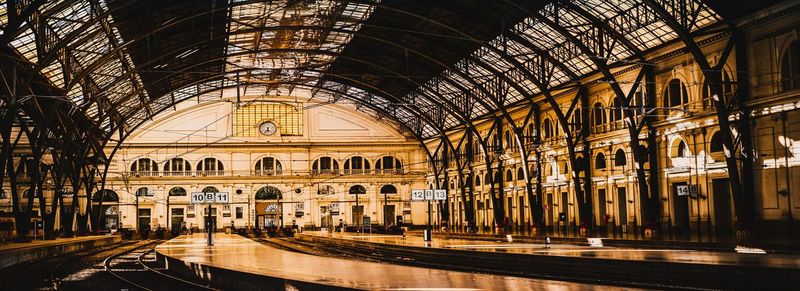
Barcelona’s most beautiful station arrived fashionably late to Spain’s railway network. Built for the 1929 International Exhibition, this Art Nouveau gem combines modernist Catalan sensibilities with classical French influences.
Two enormous metal train sheds house the platforms, their curved roofs supported by exposed steel ribs painted in sea-green. The marble-clad main hall features bronze detailing and stained-glass windows that cast colorful patterns across the floor when the Mediterranean sun hits just right.
Though no longer the city’s main terminal, the station retains an atmosphere of bygone luxury travel—a place where you half-expect to see passengers in 1930s attire boarding trains to glamorous destinations.
12. Madrid Atocha Station – Spain
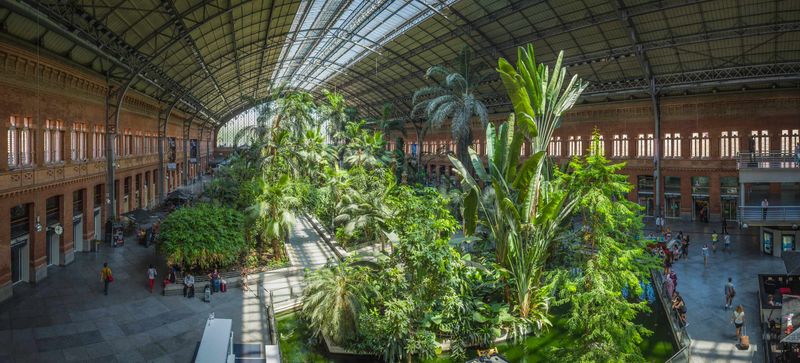
Tropical plants flourish where steam engines once arrived. Madrid’s main station transformed its historic 1892 concourse into a botanical garden featuring over 7,000 plants from 400 species, creating a lush indoor jungle beneath the original iron-and-glass roof.
Architect Rafael Moneo’s 1992 renovation preserved the industrial elegance of Alberto de Palacio’s original structure while adding modern facilities in an adjacent building. Turtles swim in ponds between the palms as commuters rush to their trains.
The station holds deeper significance for Madrileños—a memorial to the 193 victims of the 2004 terrorist bombings stands nearby, making this green oasis a place of both remembrance and daily life.
13. Kanazawa Station – Japan
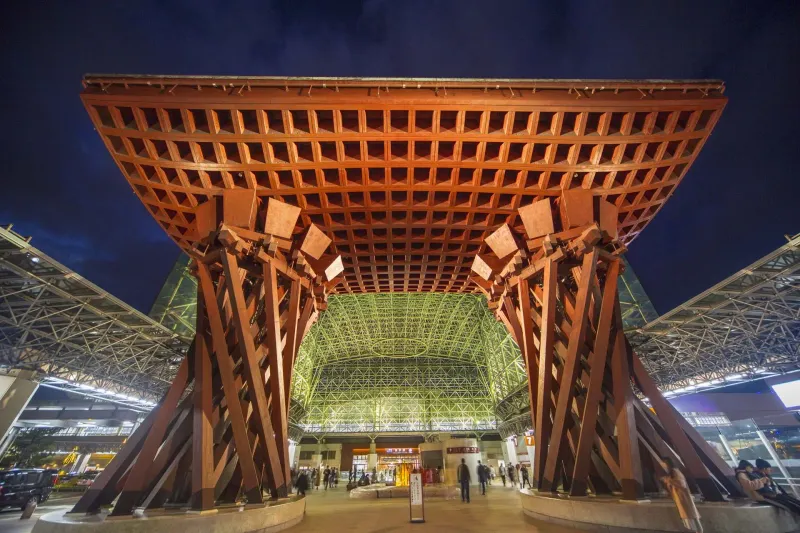
Traditional meets ultramodern at this Japanese gateway to the cultural city of Kanazawa. The station’s dramatic entrance features the massive wooden Tsuzumi Gate, inspired by traditional Japanese drums, flanked by a 14-meter-high glass and steel dome called the Motenashi Dome.
Completed in 2005, the design initially sparked controversy among locals who found it too avant-garde. Today, it’s embraced as a symbol of the city that successfully bridges ancient craftsmanship with contemporary design.
The wooden gate provides natural shelter from Kanazawa’s frequent rain while creating a striking first impression that hints at the region’s artistic heritage and craftsmanship traditions.
14. São Bento Station – Porto, Portugal
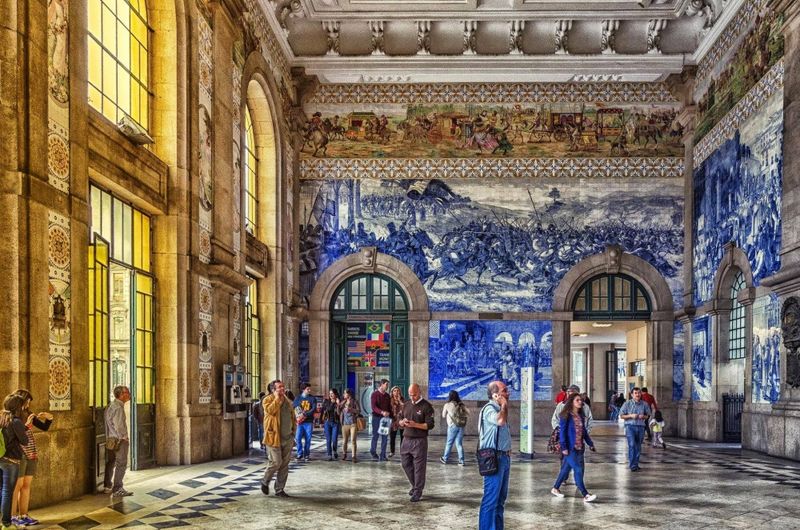
Stories of Portugal’s past unfold across 20,000 blue and white tiles lining the walls of this historic station. Completed in 1916 on the site of a former Benedictine monastery, São Bento’s relatively modest exterior gives little hint of the artistic treasure within.
Artist Jorge Colaço spent 11 years creating the azulejo tile panels depicting historical battles, rural scenes, and the evolution of transportation. The effect transforms a functional transit hall into an immersive historical document.
The station’s name—São Bento (Saint Benedict)—honors the monastery that once stood here, maintaining a connection to the site’s spiritual past even as electric trains rumble where monks once prayed.
15. Southern Cross Station – Melbourne, Australia

A billowing white roof undulates above Melbourne’s transit hub like a series of breaking waves. Redesigned in 2006 by Grimshaw Architects, the station’s most distinctive feature is its undulating roof structure that not only creates visual drama but serves crucial environmental functions.
The wave-form design naturally ventilates the space, drawing diesel fumes from trains up through the peaks where they exit through louvers. This sustainable approach earned the project multiple architectural awards.
At night, lighting transforms the rippling canopy into a glowing landmark visible across the city—a modern interpretation of the Southern Cross constellation for which the station is named.
16. Union Station – Los Angeles, USA
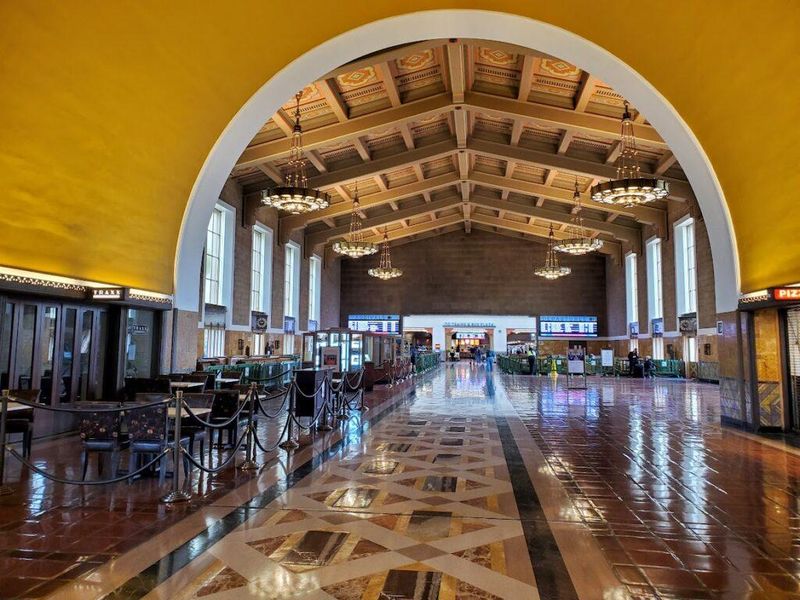
Hollywood glamour meets Spanish colonial charm in this 1939 landmark known as “The Last of the Great Railway Stations.” Terracotta tiles, arched passageways, and hand-painted ceilings blend Mission Revival and Art Deco styles into a distinctly Californian aesthetic.
The cavernous waiting room features comfortable leather chairs where countless movie stars once waited for transcontinental trains. Courtyards with palm trees and fountains create peaceful oases amid the busy transit hub.
The station has appeared in dozens of films and TV shows, from “Blade Runner” to “The Dark Knight Rises,” its distinctive architecture making it one of Hollywood’s favorite filming locations when directors need a timeless transport setting.
17. Gare de Lyon – Paris, France
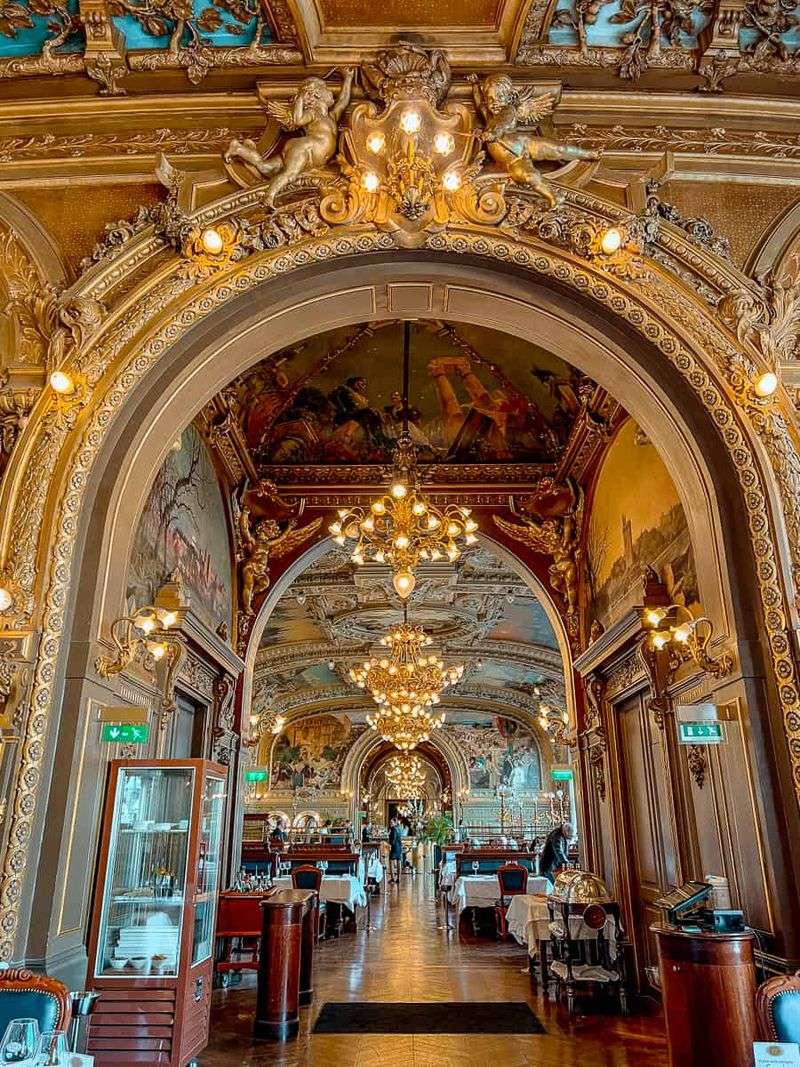
The famous clock tower of Gare de Lyon has watched over Parisian departures since 1900, when the station was rebuilt for the World’s Fair. Below this landmark timepiece lies Le Train Bleu, perhaps the world’s most opulent station restaurant, where gilded ceilings and Belle Époque murals transport diners to another era.
The station primarily serves destinations in southern France and was named for the city of Lyon, a major stop on routes to the Mediterranean. Its warm yellow stone facade stands in contrast to the cooler tones of Gare du Nord.
Countless films have captured romantic farewells on these platforms, making it synonymous with emotional departures in French cinema.

